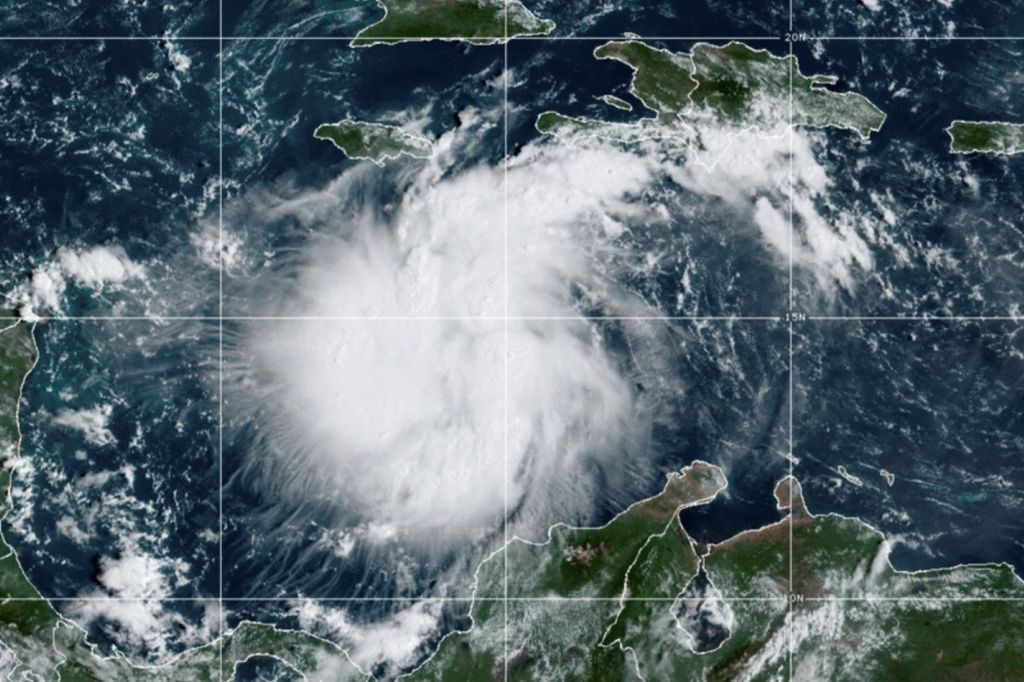NASA delays Artemis 1 launch as Tropical Storm Ian moves toward Florida
After completing a fueling test of its mega moon rocket earlier this week, NASA engineers now have to contend with Tropical Storm Ian that is aiming for Florida during the next launch attempt.
On Saturday morning, NASA teams decided to stand down on preparing for the Tuesday launch opportunity to allow them time to configure systems for rolling back the SLS rocket and Orion spacecraft to the Vehicle Assembly Building.
NASA engineers deferred a final decision until Sunday, to allow for additional data gathering and analysis as Tropical Storm Ian nears Florida.
“The agency is taking a step-wise approach to its decision making process to allow the agency to protect its employees by completing a safe roll in time for them to address the needs of their families while also protecting for the option to press ahead with another launch opportunity in the current window if weather predictions improve,” per a NASA statement. “NASA continues to rely on the most up to date information provided by the National Oceanic and Atmospheric Administration, U.S. Space Force, and the National Hurricane Center.”
The moon rocket is vertical at Kennedy Space Center launchpad 39B on Florida’s east coast, awaiting its third launch attempt.
If the Artemis 1 managers do decide to roll back due to Tropical Storm Ian, the process would begin late Sunday night or early Monday morning, per NASA.
As of a Friday press conference, NASA managers said that despite the tropics, they were waiting for forecast models to improve enough to make a call on whether to roll back the 322-foot-tall Space Launch System rocket and Orion spacecraft.
“It’s still a Tropical Depression Number Nine. It’s not a named storm,” said Tom Whitmeyer, NASA’s deputy associate administrator of Exploration Systems Development. “We really want to continue to try to get as much information as we can, so we can make the best possible decision for the hardware, and that’s why we’re here. We’re going to wait. We’ll have another conversation about it, and we’re just kind of taking it a step at a time.”
After two previous scrubs due to unruly hydrogen leaks and an engine cooling issue, NASA fueled the SLS with more than 700,000 gallons of cryogenic propellant during a test Monday to determine if engineers had resolved the problems.

Overall, NASA management called the test a success.
“There’s not an objective that we had that day that we did not achieve,” NASA SLS chief engineer John Blevins said.
Next week’s launch window was not entirely up to the space agency. NASA first needed approval from the Space Force, which oversees the Eastern Range, to extend the Flight Termination System certification due to safety requirements. The FTS is required on all rockets and would cause the vehicle to self-destruct if it veers off course and threatens the public.
Blevins shared the good news on Friday that both the Sept. 27 and Oct. 2 backup date were approved by the Space Force.
Now NASA will just have to make sure a tropical system doesn’t ruin its launch backup date.
In the past week, the tropics have become full of activity after a slow start to the Atlantic hurricane season.
According to the forecast, a front pushing into the Space Coast this weekend will bring rain and northeasterly winds and then Tropical Storm Ian will gradually push more shower activity to the Space Coast.
“The weather begins to further deteriorate Monday into Tuesday, as a possible hurricane (Tropical Storm Ian) shifts into the northwest Caribbean Sea,” launch officers wrote. “The official forecast from the National Hurricane Center tracks the possible hurricane over western Cuba early Tuesday, with the storm entering the eastern gulf near the Florida Keys mid-day Tuesday. Deep tropical moisture will spill across the Spaceport Tuesday, with widespread cloud cover and scattered showers likely during the launch window.”
This particular system will be a factor in any upcoming Artemis launch attempt because Tropical Storm Ian is forecast to strengthen into a hurricane and with expected landfall on the Florida Peninsula early next week.
The latest cone of uncertainty covers the Florida Keys, South Florida and Central Florida, including NASA’s Kennedy Space Center.
If a tropical system does bring strong winds to Florida’s Space Coast, NASA would need to roll the 322-foot-tall rocket back into the Vehicle Assembly Building. That 2-mph move to the hangar cannot happen in winds over 46 mph but stationary at the pad the rocket can withstand 74 Knots
Read the full article Here


